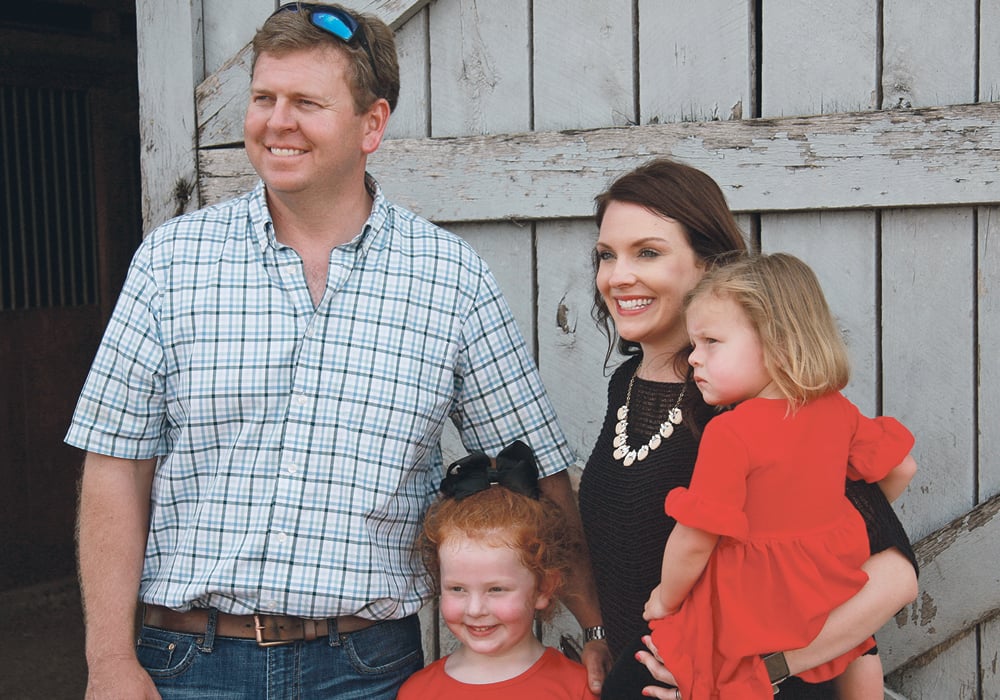The state is known for its horses, but with 1.1 million cows, it is also the largest cow-calf producer east of the Mississippi
VERSAILLES, Kentucky — In the middle of Thoroughbred country, the Allen family has been raising purebred Simmentals since 1974.
There are about 150 purebred Simmentals at Wayward Hill Farm at Versailles (pronounced Versale), and for Chris and his wife, Sara, who are full partners with his parents, Dr. Henry and Louann Allen, everything is about the cattle business.
Kentucky has about 1.1 million cows and is the largest cow-calf producing state east of the Mississippi River.
The farm consists of about 700 acres on seven different parcels in four counties. The home farm is about 15 minutes from Lexington.
Read Also

The Western Producer Livestock Report – November 6, 2025
Western Producer Livestock Report for November 6, 2025. See U.S. & Canadian hog prices, Canadian bison & lamb market data and sales insights.
“We got to a point a couple of years ago where we would either slow down or we keep going because we got so big. We see no need to slow down,” Chris said.
Expansion is difficult. They are competing for land with urban developers and the horse industry.
Undeveloped land near Lexington costs about US$10,000 an acre but further away prices fall to about $2,500 to $3,000 per acre.
“The farm next door is 76 acres and sold for $900,000,” Chris said.
Henry Allen is a veterinarian and does all the breeding work. The operation relies heavily on artificial insemination and embryo transfer for constant breed improvement.
“The majority of our business is selling seedstock. My goal is to make my genetics better and sell to commercial guys and to put as many pounds on their calves as they can,” Chris said.
Their annual bull sale averaged more than $4,750 last year and they have also enjoyed success before the judges.
Showing cattle at the major exhibitions like the American Royal Livestock Show at Kansas City, Missouri, and the National Western Stock Show at Denver, Colorado, promotes their program.
“Showing is our bad habit but we want our bad habit to make money and yet our bread and butter is the bull business. What gets us ahead is the show cattle,” he said.
Their bulls do well, but the females are also gaining a good reputation.
“We sell show heifers and we have been fortunate to have the winningest show heifer in North America,” said herdsman Nathan Hicks.
“We try to show at the highest level and we have had pretty good success at that,” he said.
They had a partnership in a Denver grand champion bull and their super cow is a young female named WHF Summer 365C that won national championships starting in 2017.
The goal is to do well with show cattle that can also work as breeders.
“We are one of the few operations in the breed that can do both. A lot of people are geared toward selling bulls and there are some who are geared toward showing. Very few try to commingle. We are seedstock producers first, but we try to keep everything in mind so our show cattle can work both ways,” said Hicks.
The goal is do better each year.
“We are never satisfied. We are constantly going for the next best thing,” said Chris.
The cattle are fed all commodities available from corn to oats, bean meal and cotton seed hulls.
The main grazing season is from May 1 to Nov. 1. Grass is stockpiled but winter grass is not as nutritious so the cattle are supplemented with extra feed.
“Our bulls are fed like athletes. I spare no expense when it comes to feeding the bulls. I feed them for longevity, testicular development and sound, functional feet. Without those, we have nothing,” Chris said.
The immediate area receives about 2,000 millimetres of annual rain on average. The average yearly precipitation in Alberta is 510 mm.
















